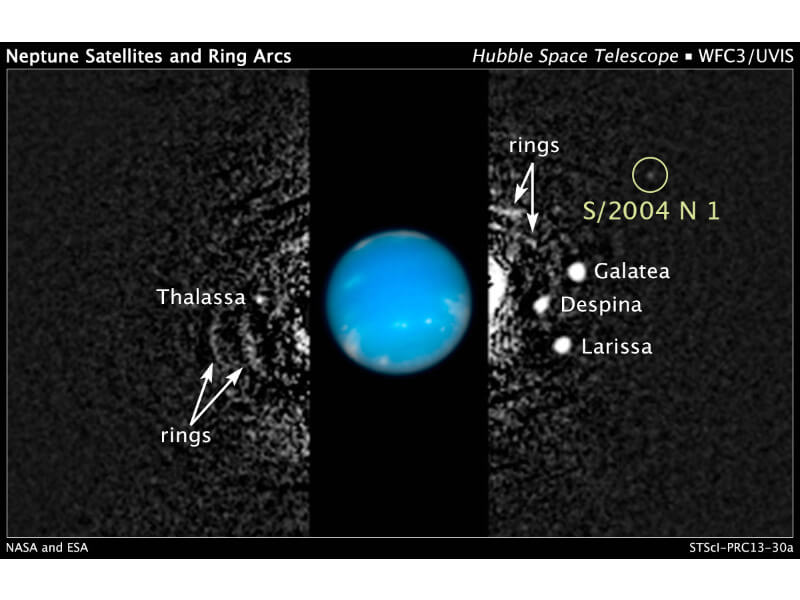The "Hubble" telescope discovered the 14th moon of the distant planet

Scientists from the United States have discovered another moon of the planet Neptune, the planet farthest from the Sun. It is Neptune's smallest moon, measuring less than 20 kilometers across. It was discovered in the observations of the space telescope "Hubble", and in the meantime received the name S/2004N1. The light reflected from it is about a million times weaker than the palest star that can be seen from Earth with the naked eye. Because of this, it was not detected in previous observations, including in the photographs of the only spacecraft that reached the vicinity of Neptune, Voyager 2, which passed by the region in 1989. Researchers at the SETI Institute in California happened to notice an unknown spot while analyzing photographs of the space telescope from the last few weeks, and as a result found it in about 150 more photographs from the last decade.
The now-discovered moon orbits Neptune very quickly at a distance of about 105,000 km, and completes one orbit around it in 23 hours (our moon, for comparison, is almost four times farther away and completes one orbit per month). After the discovery, Neptune has 14 moons. The largest of them, Triton, is similar in size to our moon.

2 תגובות
You're right, I did mean to do that and forgot.
It is always appropriate to add a link to the original news, if only so that the attached image can be seen properly.
http://science.nasa.gov/science-news/science-at-nasa/2013/15jul_neptunemoon/